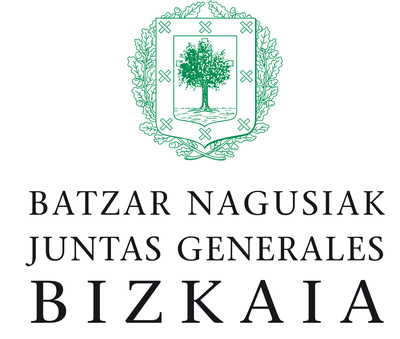PRESENTATION
In February ABAO Bilbao Opera stages the second grand premiere of the season, La favourite, by Donizetti, in the original version in French. Up to now only the version in Italian, La favorita, had been performed at ABAO, the last time 25 years ago.
Donizetti’s opera has the style of the French grand opera, with four acts, ballet, choruses and spectacular scenes, and responds to the so-called Spanish exoticism that determined the Romanticism. It is inspired by the relationship between King Alfonso XI of Castile and Leonor de Guzmán, with whom he had nine children outside his relationship with Queen Maria of Portugal. A story with a love triangle, historical figures, abuse of power, sacrifice, tragic fate and moral and religious scandal.
As it is the perfect opera for great voices to excel, it attracts singers of renown in this type of repertoire, such as the Georgian mezzo-soprano Silvia Tro Santafé, who plays the role of the long-suffering Leonor De Guzman; the tenor Ismael Jordi, as the third point of the love triangle, Fernand; and the baritone Vladimir Stoyanov, as the spiteful lover Alphonse XI. Simón Orfila, Mikeldi Atxalandabaso and Alba Chantar complete the cast.
The Director of the Donizetti Festival of Bergamo, Riccardo Frizza, winner of ABAO Bilbao Opera’s Tutto Verdi Award, is in charge of conducting the Euskadiko Orkestra, providing music to the original score, of extraordinary melodic beauty, dramatic ambition and romanticist bel canto.
The production by Valentina Carrasco, who makes her debut at ABAO, comes from the Fondazione Teatro Donizetti and Opéra National de Bordeaux, and in 2022 it received the Abbiati award for best production from the Italian critics. The Argentinean producer surprises with a proposal from a feminist point of view, elegant, ambitious and with shocking historical references.

ARTISTIC SHEET
CAST
- Léonor de Guzman
- Fernand
- Alphonse XI
- Balthazar
- Don Gaspar
- Inès
- Un Seigneur
ARTISTIC TEAM
- Director Musical
- Director De Escena
- Escenografía
- Vestuario
- Escenografía|iluminación
- Coreografía
- Producción
- Orquesta
MULTIMEDIA
SYNOPSIS
ACT I
The Kingdom of Castile, 1340. The Symphony opens with a brief introduction for string instruments, entering successive and imitatively, from double basses to violins; the austere and meditative sounds seem to herald Aida’s prelude. The mysterious theme is then developed and amplified by the entire orchestra: up to this point, the atmosphere had been religious and sullen. The first theme, nervous and rapid, fulfils a narrative role similar, within the Symphony, to that which will be the first theme in the Symphony La forza del destino; it is reprised in a fugato with various instrumental blends and is opposed to a second theme, a great ascending and descending phrase, cantabile, that will be played by the entire orchestra at the end of this instrumental introduction. In the monastery of Santiago de Compostela, the monks cross the stage. Their chorus is one of the simplest (an ascending and then descending phrase, an opening crescendo followed by a slow diminuendo, as if in a single breath), but at the same time one of the most refined Donizettian introductory choruses, with numerous small instrumental gestures in very simple counterpoint to the singing.
Father Superior Balthazar is about to follow the monks, but he notices Fernand, the novice destined to succeed him, absorbed in his thoughts and asks him the reason. Fernand confesses that he is in the grip of an earthly love for a woman whose name and condition he does not know. Fernand intends to abandon the monastery, in spite of his spiritual father reminding him of the pitfalls of worldly life. On the beach of Leon Island, Ines and other maidens await the boat that will take Fernand to the unknown lady: the solemn and intimate atmosphere of the monastery contrasts with the lightness of Ines’ female singing and the chorus, which has an ethereal, vaporous orchestration and seems to tiptoe, like in ballet music. Fernand asks Leonor in vain to reveal her name and the secret that surrounds her; she confesses that she loves him, but she cannot become his wife. Ines announces the arrival of the king: Fernand must leave immediately. To reward him for his love, Leonor gives him a letter of recommendation with which he will be able to have a brilliant military career. Naive and idealistic, Fernand thinks that Leonor is a lady of high status and that the King Alphonse XI, although married, is a suitor for her hand.
ACT II
Alphonse strolls, in love and dreaming, in the gardens of the Alcazar and discusses with Don Gaspar the victory over the infidels: the young Fernand has distinguished himself in the battle, and the king wants to reward him. Although he is waiting for a messenger from the Pope, Alphonse intends to first receive his mistress, Leonor, with whom he has long had a relationship which is opposed by both the court and the Roman curia. Leonor rebels against the King, disappointed and tired of her status as a mistress. When the king promises to repudiate the queen, ignoring the Pope’s protests, Leonor asks him to reconsider and take no reckless actions. During the party that Alphonse has organised for Leonor, the king intercepts a note that Fernand has written to her and she confesses her new love for a young man, without revealing his name. Balthazar, the Pope’s messenger, bursts in and interrupts the party: he threatens to anathematise the king –guilty of adultery–, curses the woman for the scandal and shows a Papal Bull containing Alphonse’s excommunication.
ACT III
Fernand declares his love for Leonor to the king; with cold calculation, Alphonse decides to have the two of them married immediately, to take revenge for Leonor’s betrayal and to make peace with the Church. Alphonse’s aria is an example of how music and song can have two meanings: one explicit and literal, the other hidden and subtly ironic. Leonor is still ostracised, but decides to confess her past to Fernand immediately, giving up on her happiness: for this reason, she sends Ines in search for the young man. Don Gaspar stops Ines, the King appoints Fernand a marquis, knights him and the marriage takes place. Fernand is happy but he is immediately mocked by the courtiers, who refuse to shake his hand. When Balthazar arrives, the young man realises the truth: he has married “the king’s mistress”. Outraged with Alphonse and Leonor, Fernand throws the knightly insignia to the ground, breaks his sword at the king’s feet (seized with remorse) and leaves, followed by Balthazar. Fernand’s proud and desperate declamation, in the tempo di mezzo, inserted between the slow tempo and the stretta of the finale, plays the same role as Edgardo’s curse in the second finale of Lucia di Lammermoor and reveals another aspect of the character of the young romantic tenor, who had until then been visionary and idealistic. Its first performer, Gilbert Duprez, turned it into one of the most famous moments of the opera.
ACT IV
Once again at Santiago’s monastery. The monks are digging their own graves, which symbolises their desire to leave the earthly pleasures behind. Balthazar urges the pilgrims to pray. Fernand is about to take his vows, but his thoughts always turn to “the king’s mistress”. Leonor comes forward, dying and dressed as a novice: exhausted by pain, dying, she wants to ask forgiveness from Fernand, whose voice she hears in the prayer coming from the chapel: the young man’s dressing ceremony is taking place. He comes out, recognises Leonor and is in shock. She declares her innocence and begs forgiveness from her beloved, who, overpowered by passion, suggests that they run away together, but she asks him to respect his vows. Leonor dies, blessing Fernand, who shouts to Balthazar and to the monks that the time of his own death will come soon.


























































